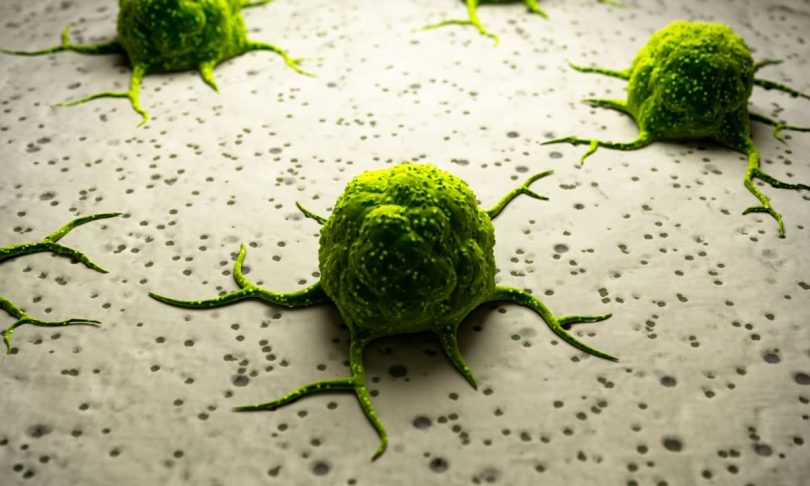What is cancer, really? Can we beat it with cannabinoids’ help?
We must begin this article by considering the role of the cell. Cells are capable of self-sufficiency, meaning that a cell is the smallest biological unit capable of experiencing life. Bacteria have among the tiniest cells by size, and they are also single-celled organisms.There are more complex living beings who survive by having a collection of cells working together to perform different but symbiotic functions. These multicellular organisms coordinate their actions through some “messaging” system that works to ensure the survival of the organism even if an individual cell must self-sacrifice. In higher organism like mammals, cellular signals can take the form of long-acting, far-reaching diffusible hormones
We live in a world of finite resources, limited by space and time. You can think about your body as a business, with each cell receiving a certain budget of resources per day. The checkbook is fluid; at any given time, resources can be shifted to where they are needed most. And when resources are moved, we had better make sure that the cells getting the short end of the stick keep to the straight and narrow and do not go rogue.
Cell division should generally proceed only when there is ample time and resources for them to do so. Consequently, our genetics code for control mechanisms that can influence cellular growth, acting as grade-school line officers keeping all the pupils disciplined and docile.
In general, there are two classes of genes that control cell proliferation. Oncogenes code for proteins that regulate the cell cycle, whose activation tells the cell it’s time to party and divide!Tumor Suppressor Genes do the opposite; when activated, they bounce the cell and tell it to stop, saying, “You’re drunk, Cell, and I’m 86ing you. Go home and sleep it off.” These genes are also responsible for telling damaged or infected cells that it’s time to die (strange concept, I know), and they do so by initiating the apoptotic pathway.
Cancers arise from unregulated, uncontrolled cellular growth. Cancers are monoclonal; they all arise from a single cell line, an Adam or Eve that, for one reason or another, experienced a malignant mutation to either an oncogene or a tumor suppressor gene.
Cannabinoids are playing an increasingly significant role in the palliative care of cancer patients, reducing their nausea and controlling their pain. [1,2]This activity is thought to be mediated by the phytocannabinoids’ interaction with our body’s own endocannabinoid receptor. Building on this hypothesis, a definitive body of basic research has shown that cannabinoids are significant mediators of antitumor activity. [3]
Cancer Research UK, providing an overview of the large amount of research that has been gathered to date, acknowledges there are still giant gaps in our knowledge, including results that have even concluded opposite findings. Significantly, cannabinoid cancer research has been anchored on in vitro experiments and animal models, highlighting a clear need to perform clinical studies. [4] In additional to direct inhibition of malignant growth, one interesting avenue that has been explored is using cannabinoids to increase the efficacy of standard chemotherapy. [5,6]
These clinical trials were generated for the treatment of glioblastoma, a type of central nervous system solid tumor. [7,8] This synergy is in its infancy, mainly due to difficulties in conducting cannabis-based clinical trials. We hope that rescheduling cannabis from Schedule I, a move supported by the NIH, the American Cancer Society, and many other biomedical organizations, will create exponential growth in opportunities to utilize cannabinoids medicinally in the areas where novel treatments are needed most.
References
- Parker, Linda A, et al. “Regulation of nausea and vomiting by cannabinoids”. Br J Pharmacol. 2011; 163(7): 1411–1422[Times cited = 147, Journal impact factor = 6.810]
- Abrams, D.I. “Integrating cannabis into clinical cancer care“. CurrOncol. 2016; 23(Suppl 2): S8–S14[Times cited = 57, Journal impact factor = 2.048]
- Ligresti, A, et al. “Antitumor activity of plant cannabinoids with emphasis on the effect of cannabidiol on human breast carcinoma”.J PharmacolExpTher. 2006;318(3):1375-87[Times cited = 367, Journal impact factor = 3.867]
- Guzman, M., et al. “A pilot clinical study of Δ9-tetrahydrocannabinol in patients with recurrent glioblastoma multiforme”.British Journal of Cancer. 2006; 95: 197–203[Times cited = 124, Journal impact factor = 5.922]
- Torres, S., et al. “A combined preclinical therapy of cannabinoids and temozolomide against glioma”. Mol Cancer Ther. 2011;10(1):90-103[Times cited = 223, Journal impact factor = 5.365]
- Donadelli, M., et al. “Gemcitabine/cannabinoid combination triggers autophagy in pancreatic cancer cells through a ROS-mediated mechanism”.Cell Death Dis. 2011; 28(4):e152[Times cited = 143, Journal impact factor = 6.817]
- Likar, Rudolf, and Nahler, Gerhard. “The use of cannabis in supportive care and treatment of brain tumor”. Neuro-Oncology Practice. 2017; 4(3): 151–160[Times cited = 0, Journal impact factor = 7.371]
- Dumitru, Claudia A., et al. “Cannabinoids in Glioblastoma Therapy: New Applications for Old Drugs”. Front MolNeurosci. 2018; 11: 159[Times cited = 5, Journal impact factor = 3.902]








